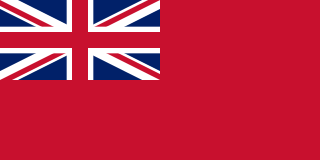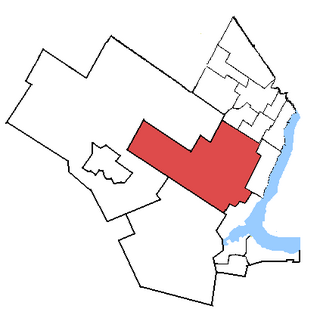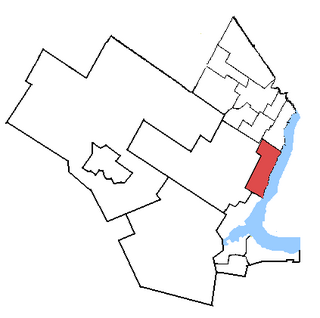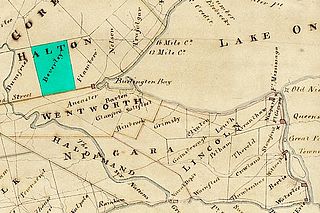
The Gore District was a historic district in Upper Canada which existed until 1849. It was formed in 1816 from parts of York County in the Home District and parts of the Niagara District. The district town was Hamilton.

A district is a type of administrative division that, in some countries, is managed by local government. Across the world, areas known as "districts" vary greatly in size, spanning regions or counties, several municipalities, subdivisions of municipalities, school district, or political district.

The Province of Upper Canada was a part of British Canada established in 1791 by the Kingdom of Great Britain, to govern the central third of the lands in British North America, formerly part of the Province of Quebec since 1763. Upper Canada included all of modern-day Southern Ontario and all those areas of Northern Ontario in the Pays d'en Haut which had formed part of New France, essentially the watersheds of the Ottawa River or Lakes Huron and Superior, excluding any lands within the watershed of Hudson Bay. The "upper" prefix in the name reflects its geographic position along the Great Lakes, mostly above the headwaters of the Saint Lawrence River, contrasted with Lower Canada to the northeast.

York County is a historic county in Upper Canada, Canada West, and the Canadian province of Ontario. It was organized by the Upper Canada administration from the lands of the Toronto Purchase and others.
Two new counties were created:
In 1838, parts of Halton County and parts of Home and Huron Districts were separated to form a new Wellington District.

The Wellington District was a historic district in Upper Canada which existed until 1849. It was formed in June 1840 from townships transferred from certain other districts:
In 1849, the district was replaced by the United Counties of Wentworth and Halton, which were separated again in 1854.









